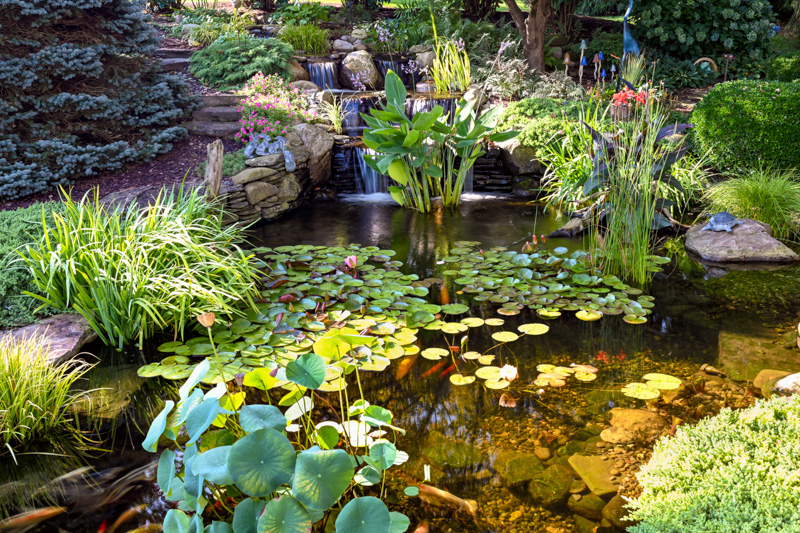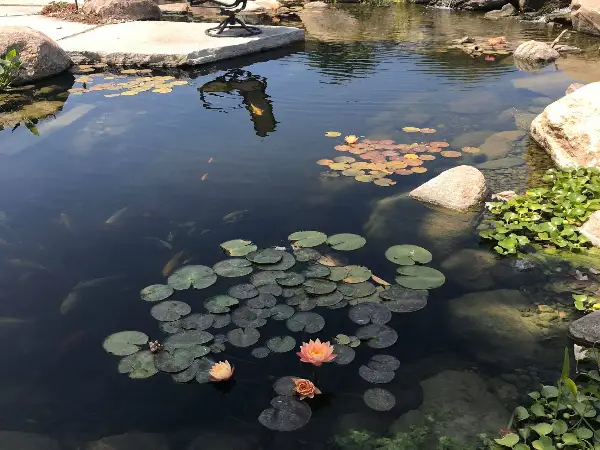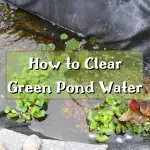Having a clear and pristine pond can greatly enhance the beauty and tranquility of your outdoor space. However, maintaining clear water in a pond can sometimes be a challenge. Fortunately, there are several effective methods to clear the water and restore the natural balance of your pond ecosystem. In this article, we will explore these methods and provide you with step-by-step instructions on how to achieve crystal-clear water in your pond.
1. Remove Excess Debris
The first step in clearing the water in your pond is to remove any excess debris such as leaves, twigs, and dead plants. This can be done using a pond net or a skimmer. Regularly skimming the surface of your pond will prevent organic matter from decomposing and causing water discoloration.

Credit: splashsupplyco.com

Credit: www.coolponds.net
2. Install a Pond Filtration System
A pond filtration system is crucial in maintaining clear water. It helps remove pollutants and waste materials that accumulate in the pond. There are various types of filtration systems available, including mechanical filters, biological filters, and UV clarifiers. It is important to choose a filtration system that suits the size and needs of your pond.
3. Use Beneficial Bacteria
Introducing beneficial bacteria into your pond can help break down organic waste and reduce algae growth. These bacteria consume excess nutrients in the water, preventing them from fueling algae blooms. Beneficial bacteria can be added in liquid or granular form and should be applied according to the manufacturer’s instructions.
4. Control Algae Growth
Excessive algae growth can make pond water appear green and cloudy. To control algae, it is important to maintain a proper balance of nutrients and sunlight in the pond. Limiting the amount of sunlight reaching the water by adding aquatic plants or using shading devices can help prevent algae growth. Additionally, regular removal of string algae and using algaecides can be effective in combating algae problems.
5. Oxygenate the Water
Adequate oxygen levels are essential for a healthy pond ecosystem. Lack of oxygen can lead to foul-smelling water and the growth of anaerobic bacteria. Installing an aerator or a fountain will help increase oxygen levels and improve water circulation. This will not only clear the water but also create a more favorable environment for fish and other aquatic life.
6. Perform Regular Water Changes
Performing regular water changes is an important part of maintaining water clarity. By replacing a portion of the pond water with fresh, clean water, you can dilute excess nutrients and restore the balance of the ecosystem. When performing water changes, ensure that the new water is free from contaminants and chlorine, as these can harm the aquatic life in your pond.
7. Avoid Overfeeding Fish
Overfeeding fish can lead to an accumulation of uneaten food and excess nutrients in the pond. These nutrients can fuel algae growth and cause water discoloration. Feed your fish only the amount they can consume within a few minutes. This will help prevent overfeeding and maintain water clarity.
8. Test Water Quality
Regularly testing the water quality in your pond is essential for maintaining clear water. Test kits are available to measure parameters such as pH, ammonia, nitrite, and nitrate levels. By monitoring these parameters, you can identify any imbalances and take appropriate corrective measures to restore water clarity.
By following these steps, you can effectively clear the water in your pond and create a visually appealing and healthy aquatic habitat. Remember to maintain a regular maintenance routine to ensure long-term water clarity and the well-being of your pond’s ecosystem.





